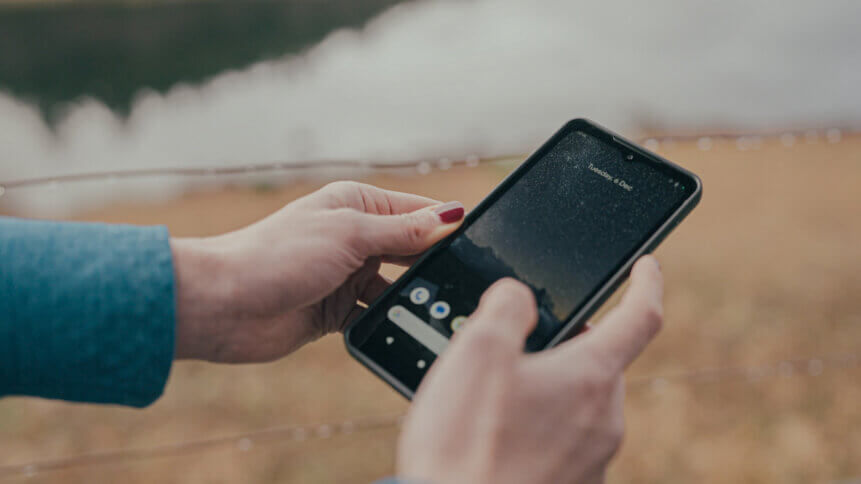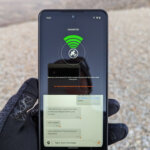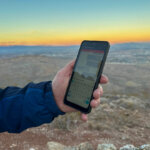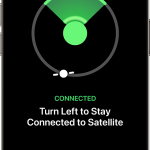Bullitt’s new business satellite cellphone throws down the gauntlet to Apple

Among the many releases and revelations at MWC at Barcelona in late February, 2023 was one product launch which might set tongues wagging in the boardrooms of some of the biggest players in the tech world. Apple launched its iPhone 14 late in 2022, and one of its most tentative selling points was the addition of a strictly limited SOS text satellite cellphone capability.
Then in January, 2023, Iridium and Qualcomm announced they would join forces to deliver a similar satellite cellphone capability for Android phones, but that it would be a trickle-down technology, launching in only premium models.
February brought us the Cat S75 from UK maker of ruggedized technology, Bullitt Group – who, far from what you might read in the tech press – beat both Apple and Qualcomm to the satellite cellphone market by quite some way. The launch of the Cat S75 takes that offering to a new level, integrating a new NTN (non-terrestrial network) chip from MediaTek, to deliver Bullitt Satellite Messenger.
Why is that a big deal? It’s the first 3GPP standards-based satellite NTN or ‘direct-to-satellite’ messaging service for mobile phones.
Anywhere.
Any time, any place, anywhere.
That means as well as all the usual features you’d expect of a modern smartphone, like super-fast 5G connectivity, the Cat S75 can connect directly to a network of geostationary satellites 37,500km above the earth. And if you have a subscription and the Cat S75’s NTN chip, you can use the phone to send SOS messages – and what would not technically by classed as SOS messages – from practically anywhere on the surface of the globe. Mobile coverage be damned.
The point about providing cellphones with round-the-clock satellite connectivity that goes beyond SOS message coverage will be obvious to businesses with large workforces in extremely remote or edge environments. No single cellphone network, for instance, has coverage of more than 80% of the US landmass. That problem ceases to exist with a satellite cellphone that you can use like a normal cellphone, rather than only when you happen to be stranded up a mountain with a broken leg and the buzzards are circling.
Freeing satellite cellphone technology up for the business market means no staff out surveying need ever be unreachable again. Any phone anywhere can receive messages from the Cat S75 with its Bullitt Satellite Messenger function. You only need to be a subscriber to the service and have the NTN chip in your phone if you want to send messages here, there and everywhere by bouncing them off satellites orbiting the earth, rather than relying on the at-best 80% reliability of terrestrial cellphone towers.
Your remote staff need never be out of contact range again. So not only life-critical SOS messages, but business critical messages, like when your CISO’s car breaks down in the middle of nowhere and they’re going to miss the board meeting, are transformed from “Would’ve been nice” pipe-dreams to the easily available technological mundanities of the here and now – all while the Qualcomm/Iridium deal is still in production, and the iPhone 14 needs you to be bleeding somewhere to use its emergency SOS satellite cellphone service.
The death of the signal desert.
What’s more, lone workers in signal deserts are suddenly safer than they were – and you can know it – with the advent of non-emergency satellite cellphone service.
As you’d expect of a company that has long specialized in ruggedized devices, the Cat S75 has a host of other features that make it worth considering especially for lone workers or those whose work takes them to challenging environments – it’s tested for repeated drops onto steel from almost 6 feet, impervious to sand, dust and dirt, waterproof to a depth of over 16 feet, and can handle being blasted with high pressure water jets (firefighters need phones too, after all).
But all of that is likely to be seen as so much so what, specifically because it comes from a company that specializes in ruggedized devices. The leap from SOS messages via satellite cellphone to any messages via satellite cellphone though is transformational, opening up new levels of technological performance to businesses worldwide.
Your move, Apple.
The big question now is whether the bigger players like Apple and Qualcomm will be able to ignore Bullitt’s advances. Having size and significant world market dominance on their side has more than allowed them to ignore the UK player until now. And if, for instance, demand for the Cat S75 takes off on a corporate level, Bullitt may have to scale at speed if it’s to capitalize on its breakthrough.
But the more the likes of Apple, Qualcomm, and other large players are quizzed about why their offerings are currently restricted in ways the Bullitt offering isn’t – only being available on premium handsets with premium prices, or only using their satellite cellphone capabilities in the direst of medical emergencies, rather than in cases which answer to business needs and realities too – the more difficult Bullitt and its Cat S75 will be for those global players to ignore.
We’ve recently seen what can happen when one company takes a quantum leap forward in what feels like the next obviously ubiquitous technology – generative AI via ChatGPT and OpenAI, anyone? The result of one company releasing the genie from its bottle was a scramble to not only meet the challenge with a range of alternative genies, but to deliver versions that met a whole range of different business cases.
Satellite cellphones are the next obviously ubiquitous technology in the mobile communication sphere – and now, the genie of satellite cellphone communication for business and personal use, rather than solely for medical emergencies – is out of its bottle. What happens next?
We’ll text you when we know.










